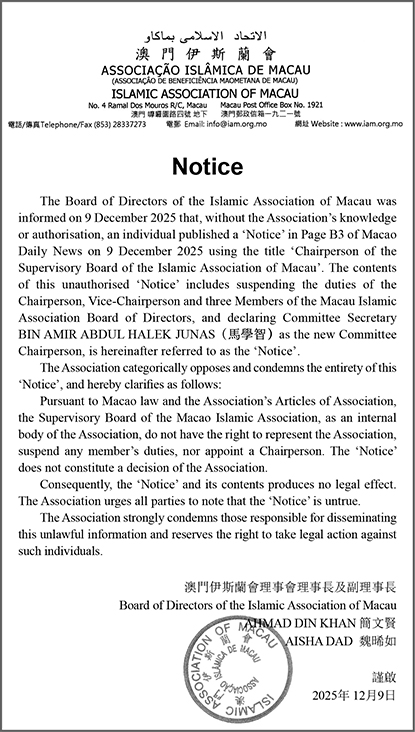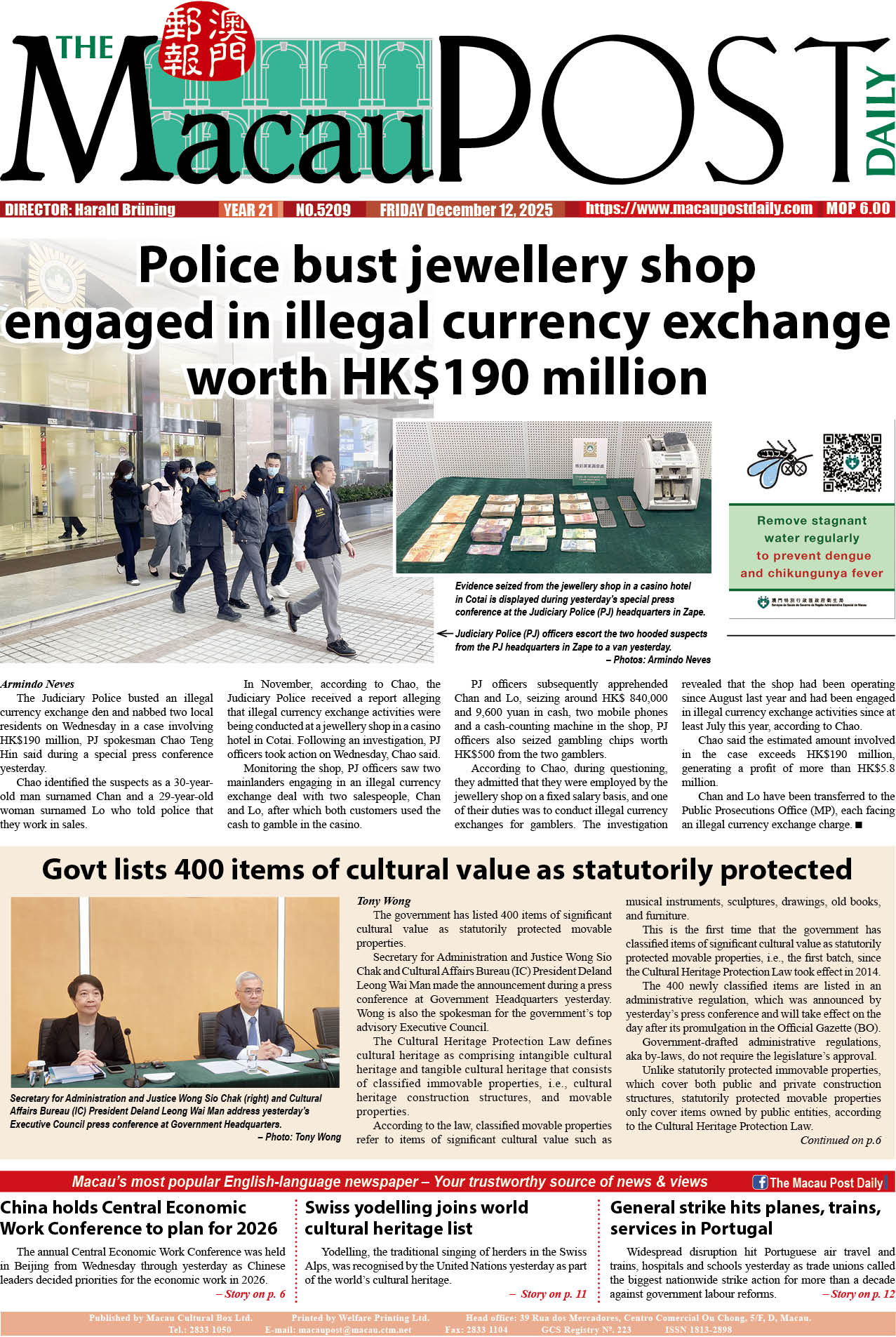The Cultural Affairs Bureau (IC) has said that the government expects to roll out a programme next month providing subsidies for owners of private buildings that are officially listed as a cultural heritage site with the aim of encouraging them to carry out regular maintenance and repairs to the buildings.
In addition to properties that have already been officially classified as cultural heritage sites, the subsidy programme will also cover private buildings that the government is proposing to list as officially-protected cultural heritage sites.
According to the bureau, the subsidy programme will also cover other private buildings that are not officially-protected cultural heritage sites but of considered to be of special cultural value.
IC President Leong Wai Man made the remarks during a press conference last week after chairing a closed-door regular meeting of the government-appointed Cultural Heritage Council at the Macau Cultural Centre (CCM) in Nape.
The council is chaired by Secretary for Social Affairs and Culture Elsie Ao Ieong U, but last week’s meeting was chaired by Leong, who is the council’s vice-chairwoman, as Ao Ieong did not attend the meeting.
The subsidy programme will be financed by the government’s Cultural Development Fund.
During the press conference, Chan Ka Io, a member of the fund’s administrative committee, said that the programme will pay out subsidies totalling 20 million patacas. Chan said that each beneficiary will receive a subsidy equivalent to 50 percent of the cost required to repair or maintain a building, with a maximum subsidy amount of two million patacas.
Chan said that the subsidy programme will not have a limitation on the number of applications, adding that the fund will continue paying out subsidies to successful applicants until the whole of the 20 million patacas earmarked for the programme has been paid out.
According to Chan, potential beneficiaries can submit their applications to the fund, which will carry out a “basic” assessment of each case. After the fund accepts an application after its basic assessment, Chan said, it will transfer the case to the Cultural Affairs Bureau, which will then provide its “technical opinion” on the application.
If the bureau green-lights the case in its “technical opinion”, it will consult the Cultural Heritage Council about it, Chan said.
The fund will decide whether to approve the application for a subsidy in compliance with the council’s opinions. After the fund approves the application, Chan said, the applicant will then be required to submit a plan for repairing or maintaining the building, which must be compiled by an architectural consultancy, to the fund.
According to Chan, the fund will pay out the subsidy to the applicant after approving the repair or maintenance plan.
Leong said that the government expected over 600 buildings in the city to be eligible for the subsidy programme.
Leong also noted that the new subsidy programme slated to be launched next month comes after the government launched a programme late last year providing subsidies for those rolling out revitalisation projects in government-owned historic buildings.









